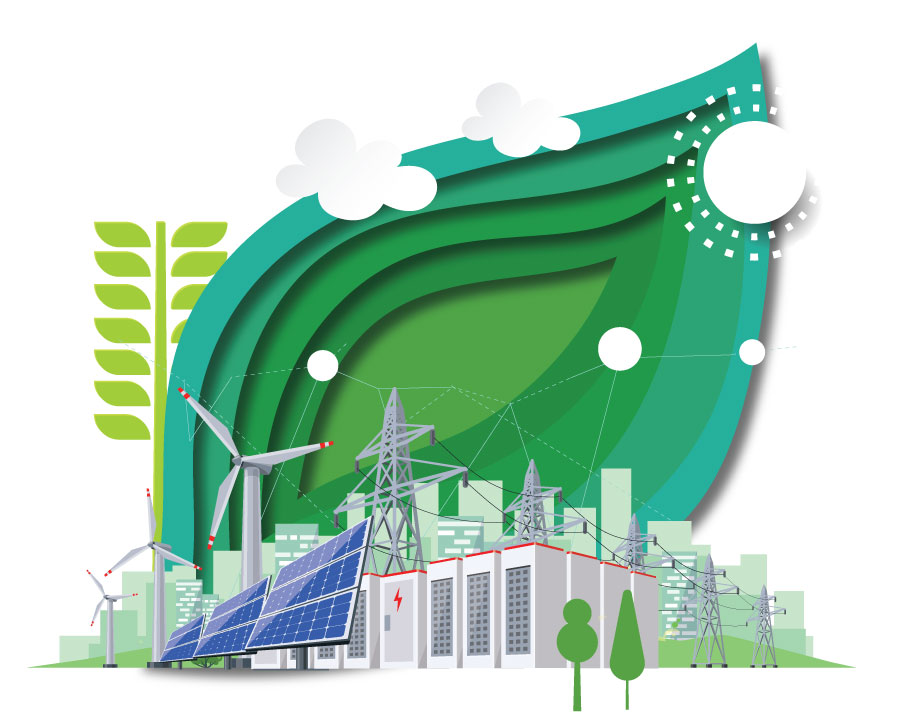Energy Blog: A Second Chance to Regulate Carbon Emissions
Energy Blog: A Second Chance to Regulate Carbon Emissions


The U.S. Environmental Protection Agency once again is looking to restrict carbon dioxide from the nation’s power plants.
Power plants were once the largest source of carbon dioxide and other greenhouse gas emissions in the United States. As recently as 2007, the power section emitted more than 2.4 billion tons of greenhouse gases (measured in carbon dioxide equivalent by the EPA.), which accounted for nearly one-third of the U.S. total. More alarmingly, the total had gone up by 31 percent from the 1990 level, and there were few signs of a turnaround.
It was against this background that the EPA was first enlisted in the fight against climate change, an effort that was stalled in court and by a change in administration. But on April 22, it was reported by the New York Times and elsewhere that the agency would again begin the process to impose strict limits on carbon emissions from power plants and institute rules that might compel fossil-fuel powered plants to install carbon-capture technology. If the proposed rules are enacted—and not subsequently overturned—they would be a large step toward the Biden Administration’s initial goal of zeroing out net carbon emissions from the power sector by 2035.
The new rules are still being reviewed and have not been released for public review or comment. The Washington Post quoted EPA spokesperson Maria Michalos in an e-mail statement, “EPA cannot comment because the proposals are currently under interagency review. But we have been clear from the start that we will use all of our legally upheld tools, grounded in decades-old bipartisan laws, to address dangerous air pollution and protect the air our children breathe today and for generations to come.”
Become a Member
It was more than 15 years ago that the EPA began its effort to regulate carbon emissions. An executive order signed in May 2007 by President George W. Bush directed the EPA to regulate CO2 emissions from vehicles. Pundits thought that with the election of Barack Obama in 2008, the agency would take more aggressive steps to limit carbon emissions from power plants and other stationary sources.
But the Obama Administration never lived up to that promise. The agency’s approach of relying on the authority granted by the Clean Air Act limited the speed and scope of what it could accomplish. After seven years in office, the administration presented what it called the Clean Power Plan, but that plan largely put the onus on states rather than the federal government to act. Due to the timing of the Clean Power Plan near the end of President Obama’s second term, it was not implemented before he left office, and the Trump Administration made a point of gutting it.
The Biden Administration campaigned on slashing carbon emissions in the power sector, particularly from coal power plants. A rule beefing up the Mercury and Air Toxics Standard, which set limits on mercury emissions, was proposed in early April, following a finding in February that declared the agency had the legal authority to do so. While the impetus for the mercury standards was to protect people living downwind from power plants from chemicals known to damage the nervous system, some observers see it as a means to raise the cost of coal power, making it more attractive to retire such plants.
More on This Topic: Climate of Optimism
The carbon regulations now under consideration would be more direct. The New York Times reported, “Almost all coal and gas-fired power plants would have to cut or capture nearly all of their carbon dioxide emissions by 2040, according to the people familiar with the regulation, who asked not to be identified because the rule has not been made public.”
Once those new rules are announced, it is not certain what effect they may have. A new administration following the 2024 election might shelve them, as the Trump Administration did to the Clean Power Plan. There is also the prospect of a legal challenge. Last year, the Supreme Court invalidated the very premise of the Clean Power Plan, ruling that executive agencies could not enact sweeping regulation without explicit authorization from Congress. Even though Congress later spelled out such authorization in the Inflation Reduction Act, it is thought that the conservative majority may try to hamper the EPA in future rulings.
Read ASME's Climate Statement
Ultimately, the lack of EPA regulations may not matter that much. In the 15-plus years since 2007, carbon emissions from the power sector have dropped by more than 35 percent, to a level significantly below the 1990 mark. Even without a sweeping regulatory framework, utilities have been switching from coal to natural gas, wind, and solar power. While it is possible that the switchover from coal would have been even faster had there been a penalty for carbon emissions, the market—in the form of low costs for gas and renewables—has made a powerful case on its own.
Jeffrey Winters is editor in chief at Mechanical Engineering magazine.
It was against this background that the EPA was first enlisted in the fight against climate change, an effort that was stalled in court and by a change in administration. But on April 22, it was reported by the New York Times and elsewhere that the agency would again begin the process to impose strict limits on carbon emissions from power plants and institute rules that might compel fossil-fuel powered plants to install carbon-capture technology. If the proposed rules are enacted—and not subsequently overturned—they would be a large step toward the Biden Administration’s initial goal of zeroing out net carbon emissions from the power sector by 2035.
The new rules are still being reviewed and have not been released for public review or comment. The Washington Post quoted EPA spokesperson Maria Michalos in an e-mail statement, “EPA cannot comment because the proposals are currently under interagency review. But we have been clear from the start that we will use all of our legally upheld tools, grounded in decades-old bipartisan laws, to address dangerous air pollution and protect the air our children breathe today and for generations to come.”
Become a Member
It was more than 15 years ago that the EPA began its effort to regulate carbon emissions. An executive order signed in May 2007 by President George W. Bush directed the EPA to regulate CO2 emissions from vehicles. Pundits thought that with the election of Barack Obama in 2008, the agency would take more aggressive steps to limit carbon emissions from power plants and other stationary sources.
But the Obama Administration never lived up to that promise. The agency’s approach of relying on the authority granted by the Clean Air Act limited the speed and scope of what it could accomplish. After seven years in office, the administration presented what it called the Clean Power Plan, but that plan largely put the onus on states rather than the federal government to act. Due to the timing of the Clean Power Plan near the end of President Obama’s second term, it was not implemented before he left office, and the Trump Administration made a point of gutting it.
The Biden Administration campaigned on slashing carbon emissions in the power sector, particularly from coal power plants. A rule beefing up the Mercury and Air Toxics Standard, which set limits on mercury emissions, was proposed in early April, following a finding in February that declared the agency had the legal authority to do so. While the impetus for the mercury standards was to protect people living downwind from power plants from chemicals known to damage the nervous system, some observers see it as a means to raise the cost of coal power, making it more attractive to retire such plants.
More on This Topic: Climate of Optimism
The carbon regulations now under consideration would be more direct. The New York Times reported, “Almost all coal and gas-fired power plants would have to cut or capture nearly all of their carbon dioxide emissions by 2040, according to the people familiar with the regulation, who asked not to be identified because the rule has not been made public.”
Once those new rules are announced, it is not certain what effect they may have. A new administration following the 2024 election might shelve them, as the Trump Administration did to the Clean Power Plan. There is also the prospect of a legal challenge. Last year, the Supreme Court invalidated the very premise of the Clean Power Plan, ruling that executive agencies could not enact sweeping regulation without explicit authorization from Congress. Even though Congress later spelled out such authorization in the Inflation Reduction Act, it is thought that the conservative majority may try to hamper the EPA in future rulings.
Read ASME's Climate Statement
Ultimately, the lack of EPA regulations may not matter that much. In the 15-plus years since 2007, carbon emissions from the power sector have dropped by more than 35 percent, to a level significantly below the 1990 mark. Even without a sweeping regulatory framework, utilities have been switching from coal to natural gas, wind, and solar power. While it is possible that the switchover from coal would have been even faster had there been a penalty for carbon emissions, the market—in the form of low costs for gas and renewables—has made a powerful case on its own.
Jeffrey Winters is editor in chief at Mechanical Engineering magazine.



